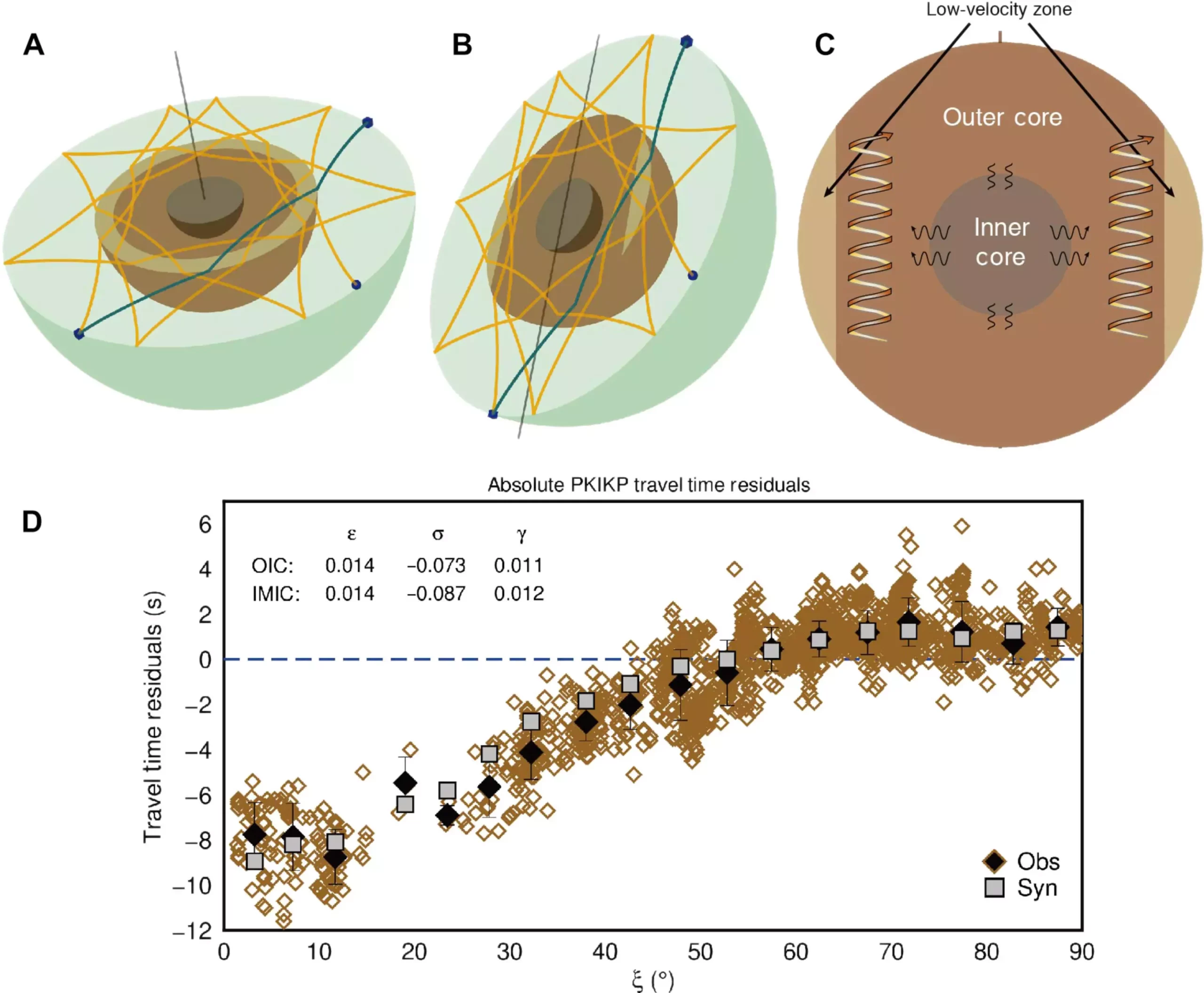Scientists from The Australian National University (ANU) have made an intriguing discovery deep within Earth’s liquid core. This doughnut-shaped region, located thousands of kilometers beneath our feet, has provided new insights into the dynamics of our planet’s magnetic field. The structure, found only at low latitudes and sitting parallel to the equator, remained undetected until now. This groundbreaking discovery sheds light on the complex composition and behavior of Earth’s core.
Earth’s core consists of two distinct layers: the inner core, a solid layer, and the outer core, a liquid layer. The newly discovered doughnut-shaped region is situated at the top of Earth’s outer core, where it meets the mantle. According to ANU seismologists, seismic waves detected in this region are slower compared to the rest of the liquid outer core. This unique characteristic provides valuable information about the composition and dynamics of Earth’s core-mantle boundary.
An Innovative Approach to Seismic Wave Analysis
Rather than utilizing traditional seismic wave observation techniques, ANU scientists analyzed waveform similarities many hours after the origin times of earthquakes. This unconventional approach led to the identification of the doughnut-shaped structure within Earth’s liquid core. By studying the geometry of wave paths and their travel times through the outer core, the researchers were able to uncover this previously hidden feature. The extensive data collection and analysis allowed for a more comprehensive understanding of Earth’s core dynamics.
Implications for Earth’s Magnetic Field
The discovery of the doughnut-shaped region has significant implications for our understanding of Earth’s magnetic field. The outer core, predominantly composed of liquid iron and nickel, is responsible for generating Earth’s magnetic field. The movement of the electrically conductive liquid creates a protective shield around our planet, safeguarding it from harmful solar winds and radiation. The presence of light chemical elements in the outer core affects the speed of seismic waves, offering valuable insights into the composition and behavior of this region.
Dr. Xiaolong Ma, a study co-author, highlights the importance of multidisciplinary efforts in unraveling the mysteries of Earth’s outer core. The interaction between seismology, mineral physics, geomagnetism, and geodynamics is crucial in advancing our knowledge of Earth’s complex internal structure. The discovery of the doughnut-shaped region underscores the need for continued exploration and research to unlock the secrets of our planet’s magnetic field.
The discovery of the doughnut-shaped region within Earth’s liquid core represents a significant advancement in our understanding of Earth’s dynamics. This unique structure, hidden from previous studies, offers a glimpse into the complex composition and behavior of our planet’s core. Through innovative research approaches and collaborative efforts, scientists continue to unravel the mysteries of Earth’s magnetic field, paving the way for new discoveries and insights into the fundamental processes that sustain life on our planet.



Leave a Reply